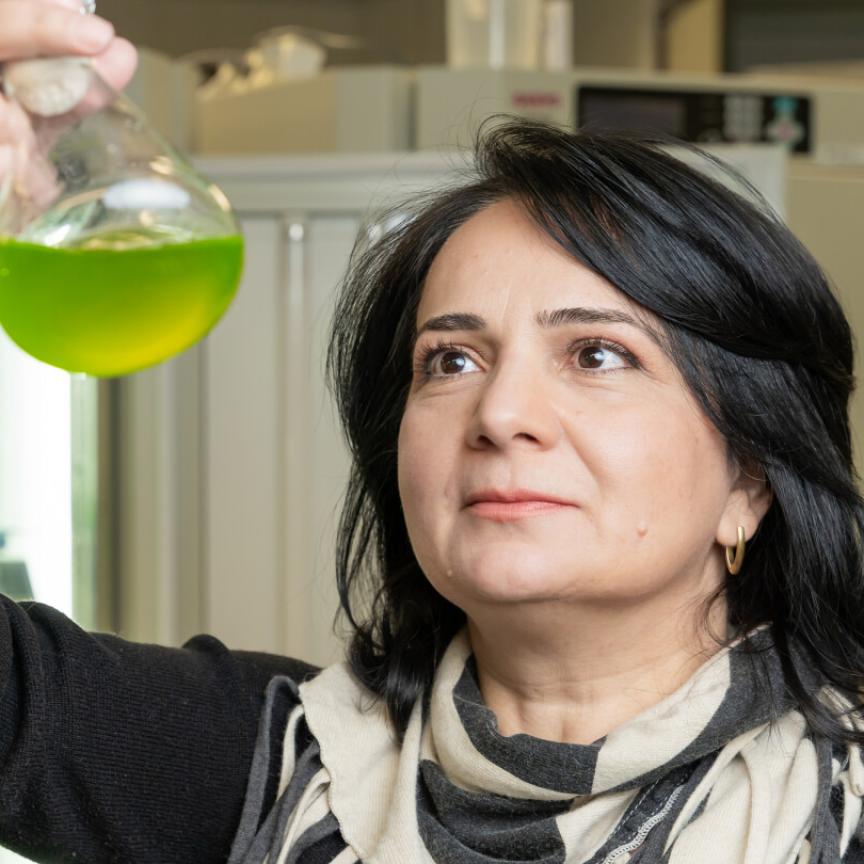Nirev Patel is part of a farming cooperative in Gujarat, India, and is using drones to help manage an area of distributed farmland.
What is the optical technology of choice on a drone and why?
"Drones with hyperspectral sensors are the top choice, but we have only used these with companies that own the drones and provide the service. The technology is just too expensive for regular use at the moment, but it really is magic, because the spectral sensor can spot the start of disease transmission or pest problems before the human eye can. Diseases are a major problem, particularly as we are experiencing changes in weather because of climate change. Often, by the time we spot signs of disease on plants it is too late to do anything that has much effect. So this really is a game-changer in the management of crops.
"We use camera-mounted drones for security reasons, to spot trespassers, or groups of animals that are brought onto farms illegally (destroying crops in the process). They also help us manage large areas where travelling between farms takes a long time on foot or where there is risk of snakes."
What are the technical challenges that impede adoption of optical drone technology?
"Cost is always a prohibitive factor, even despite the government subsidies for the technology. It is still a significant investment compared to what farmers have been used to previously.
"Making sure the results are understandable is important, but this has improved over the last few years. From our hyperspectral survey, the results were colour-coded and the software gave suggestions based on the results.
"For older farmers, using any type of drone technology is still a challenge, but if their offspring are still around they take on the responsibility, and they are more than capable of flying the drone and reading the results. Similarly, in my case, there are often farming alliances or co-operatives set up which make use of the more technical-minded individuals within a community.
In my opinion, the cost is worth it because I have read a lot of literature and have seen real-life results. In our case, by using hyperspectral sensors from early in the growing season, we were able to decide where to spray the pesticides, and we had a much better yield than the previous year when our crops were really reduced. But some farmers still think this was down to luck, that it’s natural to have some years with better yields than others. So it is difficult to relay these benefits to farmers who have farmed a certain way for generations, especially when the cost is so high that you can’t gather data over longer periods to prove the technology’s impact.
"I find it really useful to show them videos from news sites, or even promotional videos, for example case studies, from large drone companies. They can then understand the purpose behind introducing a new way of doing things, and see successful examples."
How do you choose where to buy your drones from?
"Again, cost is important, and getting the best battery life and range for your money. I think the company’s reputation is important, particularly if they offer any warranty – and if the company fulfils that warranty obligation according to reviews. Word of mouth is important here, along with internet reviews. As I mentioned, use cases, videos, and explainers on a company website also helps me to ‘sell’ the technology to my peers, as it is not my decision alone to make a purchase."
Indian government aids farmers with drone operation
Unmanned aerial vehicles (UAVs) equipped with image sensors are already providing accurate crop height and health data on farms in the West. This data, through machine learning, can be used by farmers to estimate biomass and yield, and make important farm management decisions, such as on crop rotation.
However, in vast agricultural regions such as India, the uptake has not been as significant. This is why the Indian government introduced support measures last year to encourage the use of drones within the farming sector in an attempt to boost yields.
Subsidies and training initiatives were announced following the results of several pilot studies, which demonstrated the effectiveness of satellite and drone imaging in improving direct yield estimations, risk mapping and crop management.
The government also pointed to benefits such as more efficient use of resources, fewer field operational delays, faster turnaround times, and better pesticide management – crucially, resulting in reduced human exposure and less water use.
Under the new incentives, the government will subsidise up to 100% of the cost of the purchase or hire of drones, and has also developed accessible guidance documents to provide information on how to use drones safely and effectively, including for pesticide and nutrient application. The government has also eased drone ownership regulations in agriculture to encourage adoption.
The use of drones in farms in India has been relatively uncommon up until now, but it is hoped the new incentives will overcome traditional barriers to adoption, such as cost and training. The new initiatives also aim to encourage the domestic technology development within the emerging drone industry, which currently boasts nearly 300 start-ups, according to Tracxn Technologies.
The agricultural drone market in India is set to experience a four-fold increase by 2028, with a projected CAGR of more than 25% during 2022-2028, market research firm BlueWeave Consulting predicts.




